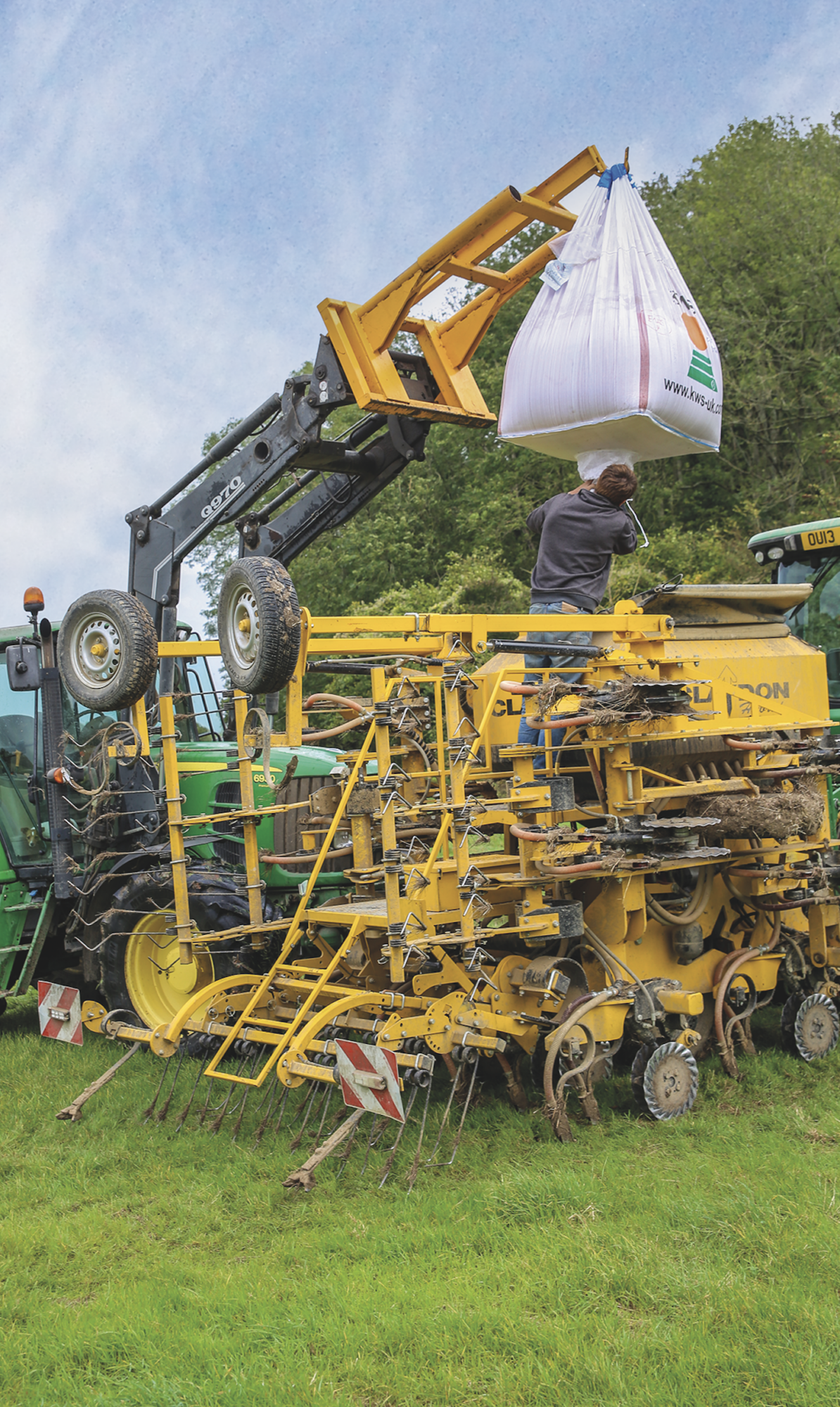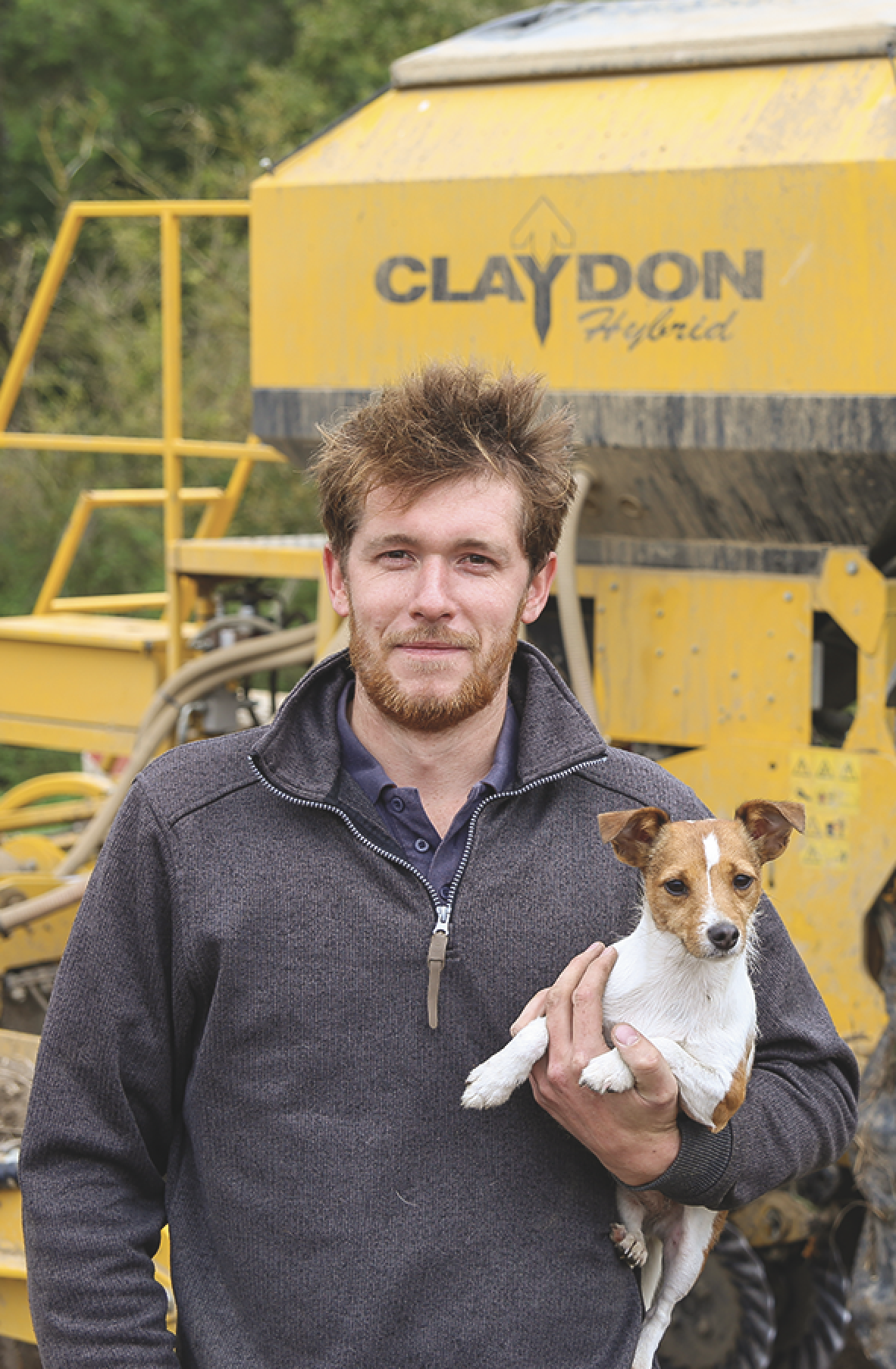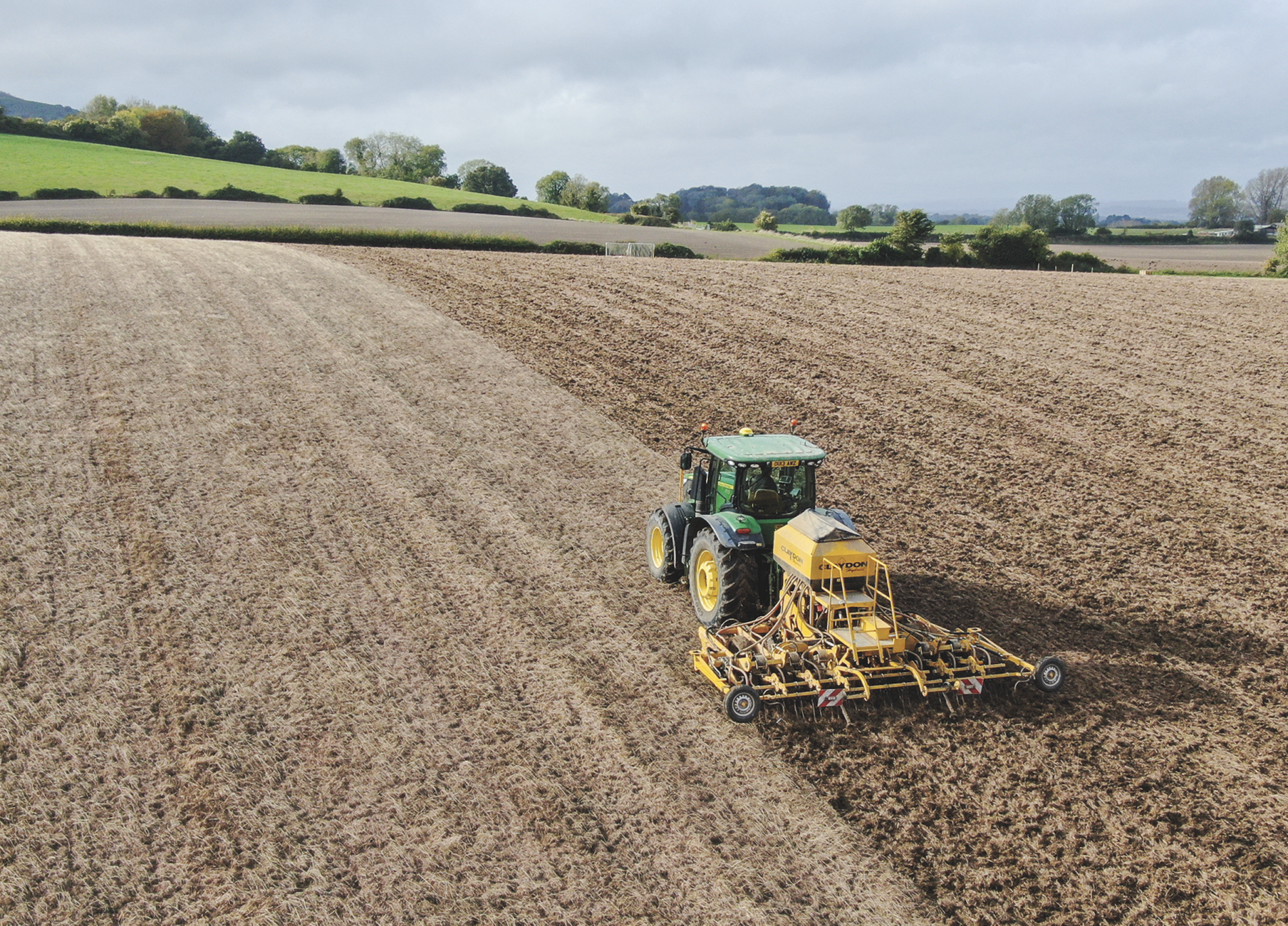Soil improvement, cost and time savings result from switch to direct drilling
21st November 2021
Time and cost savings and an improved soil structure have resulted from a move to direct drilling for a South Downs family farm. David Williams reports.
West Sussex-based JG Eales & Son grows approximately 500ha of arable crops in a rotation including winter wheat, winter barley, spring barley, winter oats and grass seed. Winter beans are missing from this year’s rotation for the first time. Grass is grown in two-year leys primarily for seed production, but one cut of silage is taken from it in the spring, and it also provides winter grazing for a flock of 250 Romney Lleyn breeding ewes, giving the farm’s permanent pastures a break.
The farm is run by brothers David and Stephen Eales and David’s son – also called David – and the sheep enterprise is the responsibility of David’s fiancée Shannon. Land at the home farm has been farmed by the family for approximately 40 years as long-term tenants, and the rest is a mix of contract farming agreements and farm business tenancies. Soil types include heavy clay in the Weald, greensand, gault clay and soils with a very high flint content on the hills. Spraying is among contracting services provided for local farmers.
Multiple benefits
The Eales moved away from ploughing approximately 20 years ago and adopted a min-till crop establishment regime. Then in 2016 the decision was made to move to direct drilling. “We farm some tricky land and believed that our whole operation would benefit,” explained David. “Reducing our cultivations would save us fuel and time, and when the weather is variable it would remove the risk of prepared seedbeds being rained on and becoming too wet to work ahead of drilling.”
Options considered
Various drills were considered at the Cereals event that year – with the focus on tine models rather than discs due to the flinty soils. The Claydon Hybrid drill with its leading tine and tine coulters was considered the most suitable. Shortly after, the Eales visited the Claydon factory in Suffolk and saw crops established by managing director, Jeff Claydon’s own drill on his heavy land farm. “We were impressed by the operation and found Jeff to be very honest and easy to deal with. He showed us crops which looked excellent, but also made a point of showing us those which hadn’t established so well, and we immediately placed an order for a 4.8m Hybrid model,” explained David.

David says the drill is well designed. Filling is easy, the hopper is accessible and calibration through the in-cab display is simple and accurate. It is also quick and easy to swap the working components for different crops and conditions.
Versatile solution
Standard Claydon leading tines and A-shares were specified, as well as a set of bean points. Since taking delivery, a twin-tine seeding kit has been added, and during wet weather in 2019 a set of double harrows at the rear replaced the standard rear paddles and has remained on the machine as it consistently achieves a better finish on the Eales’ soils. Leading discs have also been purchased to replace the front leading tines when direct drilling into grass stubbles.
“The Claydon drill has proved extremely versatile, and it’s easy to swap the working components to suit the conditions,” confirmed David. “It’s a great wet weather drill too, although because we are not dependent on seedbeds created before drilling, we have more choice as to when we work.”
Reduced cultivations
When the drill was purchased, a Claydon straw rake was also ordered, and this is used immediately after combining to encourage volunteer and weed seeds to chit before they are sprayed off prior to drilling. Compaction is relieved in selected blocks of land as part of the crop rotation using a Sumo GLS low- disturbance subsoiler. David said it leaves the land level and no subsequent cultivations are needed before drilling with the Claydon.
A Horsch Terrano tine cultivator is also used when needed. “Our clay soils become very hard during a dry autumn and a very shallow pass with the Terrano before drilling creates extra loose tilth and helps achieve ideal conditions for early growth.”
The farm has retained its plough, although it is only used for game cover establishment. “It’s a good plough and we still offer ploughing as a contracting service,” said David. “It spends most of its time in the shed and although it hasn’t been used for our own arable crops since 2016, we would use it again if a season demanded it.”
Cost-effective
The Claydon drill has proved reliable and cost-effective during its first six years on the farm and, with 2,600ha of drilling completed, it has only needed one set of replacement leading tines and is still on its first set of grassland cutting discs. There is little routine maintenance, and it is easy to work on.
David said it is well designed too – access for calibration is good, drilling rates are accurate and the in-cab control terminal is easy to set up and use.

David Eales said the Claydon drill
has proved suitable for a range of conditions from ploughed land to bare stubbles. Pre-cultivation is avoided when possible, but when additional loose tilth is needed then a Horsch Terrano is used, and the farm’s plough remains available in the shed.
David is pictured with his dog Wren which accompanies him in the cab.
Soil improvement
“We had a good soil structure before buying the Claydon but have seen a definite improvement since moving to direct drilling,” he explained. “In a wet season the soils drain better and improved traffic carrying ability allows us extended working windows for fertiliser applications and spraying.
It’s hard to tell whether our yields have increased since moving to the Claydon system, as every year the weather has been the limiting factor. However, we are certain that yields haven’t declined while our costs have reduced dramatically. We have more time for other activities too as we aren’t running around with three additional tractors trying to prepare land, and that relieves pressure during the drilling season – especially this autumn when frequent rain showers meant conditions were rarely dry.”
An additional benefit resulting from the move away from ploughing and to direct drilling is that the fields have become more level. “Previously there were uneven areas where the plough was lifted in and out of work, and that was especially noticeable when spraying. The improvement has allowed us to reduce the cutting height when combining and most stubbles are shaved to only two inches high.”
Mounted vs trailed
The farm’s previous 4m drill was trailed, but the 4.8m Claydon is mounted. David says this helps achieve higher daily work rates as lifting the drill clear of the ground and reversing into field corners saves time and improves accuracy compared to manoeuvring a trailed machine. Fewer wheelings created during headland turns is also an advantage.
“Average daily work rates of 25– 30ha are easily achieved which match the size of typical field blocks within our rotation,” David added. “I really like the drill and it copes with our range of soils and crops well. We aim for quality crops including seed to achieve price premiums, and have drilled into maize stubbles, into ploughed land on other farms and following deep cultivations. There have been very few occasions when it hasn’t achieved the result we wanted.
“The back-up from Jeff Claydon and his team is excellent too. When we need help or advice it is always available, and opportunities to meet other Claydon drill users at open days have been useful – allowing us to share ideas and compare our experiences.”

